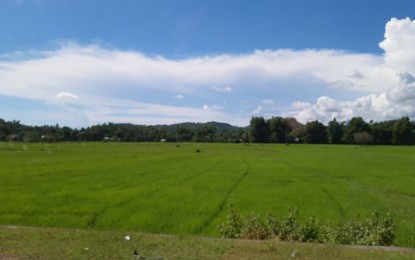
File photo
MANILA – Department of Agriculture (DA) Undersecretary for Rice Industry Development Leocadio Sebastian urged participants of the recent 18th Annual Meeting and Scientific Convention of the Outstanding Young Scientists, Inc. to focus on societal outcomes rather than mere outputs.
Recognizing the challenges in achieving food security, Sebastian emphasized the importance of prioritizing outcomes and impacts related to raising rice farmers' income.
He challenged the conventional perception of scientists as confined to laboratories, citing their responsibilities to make tangible improvements in the lives of people, societies and the world.
Sebastian emphasized that effecting real change must not burden farmers and potential beneficiaries of research.
He enumerated the four core strategies of the Masagana Rice Industry Development Program (MRIDP) as MAtatag (climate change adaptation or resiliency), SAma-sama (clustering and consolidation of farms), GAnado (motivated farmers in the rice value chain), and NApapanahon (digital transformation to improve farming practices and program implementation).
“Matatag aims to boost farmers' climate change resiliency by adjusting the planting calendar during the wet season, shifting main production to the dry season, and promoting crop diversification and crop-livestock-fisheries integration using balanced fertilization, proper irrigation, and other climate-smart practices,” he said.
Sama-sama, he said, seeks to create economies of scale by clustering farmers and consolidating farms at the barangay and municipal levels and converging interventions.
“They will be linked to millers and the NFA (National Food Authority), enabling cooperation between farmers, millers, and government institutions to achieve better prices, better quality rice, and appropriate seed distribution. This, too, is the essence of GAnado, or the value chain approach,” he added.
NApapanahon, on the other hand, supports the first three approaches by providing timely and accurate information for decision-making, making interventions digitally-based, location-specific, and efficient.
"We analyze critical factors such as the timing of crop establishment, yield, soil fertility, and risks, utilizing satellite technology to ensure accurate information for targeted interventions. Soon, drone service providers will be employed for the application of inputs such as seeds, herbicides, pesticides, and fertilizers, and farmers will be able to manage their farms through their mobile phones", Sebastian said.
While encouraging farmers to adopt these technologies, he acknowledged that many farmers perceive these as an added expense rather than a solution to their immediate concerns for higher prices for their crops and increased income.
He added that other countries not only improved production but also transformed their markets.
“Therefore, it is essential to incentivize farmers by consolidating them into clusters and connecting them to the market, ensuring they earn more. Ultimately, higher incomes and increased rice self-sufficiency will be the most beneficial outcomes of the MRIDP,” he said.
Sebastian emphasized that achieving 95 to 97 percent rice self-sufficiency would not result in a halt in production but that motivated by profit, farmers would naturally strive to increase their production, paving the way for rice exportation.
He appealed to the scientists to refrain from blaming policies and regulations for limited scientific impact and instead, encouraged them to strive toward scaling their inventions and discoveries for greater societal impact, fulfilling their commitment to serve society.
Sebastian also challenged Outstanding Young Scientists to break free from the stereotypical image of scientists and think beyond their own careers.
He asked that their outputs must lead to tangible societal outcomes benefiting millions of Filipino farmers, fishers, stakeholders and consumers. (PR)
